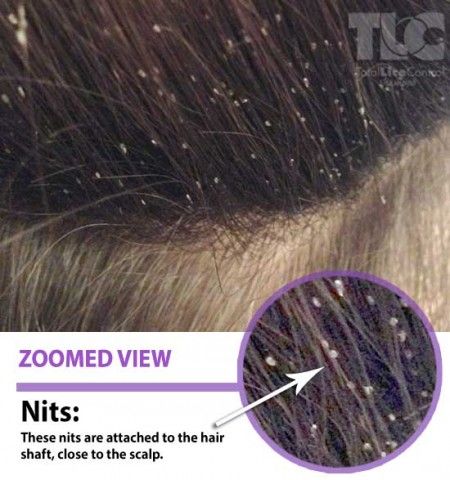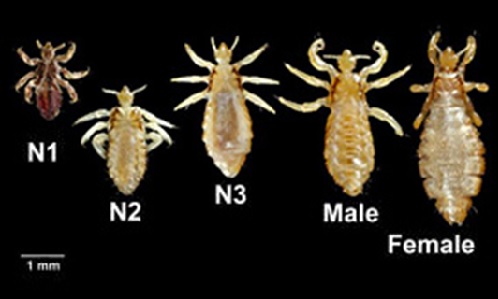Additional Information
The bane of many parents, the head louse is a tiny, wingless parasitic insect that lives among human hairs and feeds on extremely small amounts of blood drawn from the scalp. Although they may sound gross, lice (the plural of louse) are a very common problem, especially for kids ages 3 years to 12 years (girls more often than boys).
Lice aren't dangerous and they don't spread disease, but they are contagious and can be quite a nuisance whenever there is close head-to-head contact, in particular amongst children. It's wise to treat head lice quickly once the diagnosis is made because they can spread easily from person to person.
Having head lice is not a sign of uncleanliness or poor hygiene. The pesky little bugs can be a problem for kids of all ages and socioeconomic levels, no matter how often they do — or don't — clean their hair or bathe.
ARE LICE CONTAGIOUS?
Lice are highly contagious and can spread quickly from person to person, especially in group settings (schools, child care centres, slumber parties, sports activities and camps).
Though they can't fly or jump, these tiny parasites have specially adapted claws that allow them to crawl and cling firmly to hair. They spread mainly through head-to-head contact. Kids are most prone to catching lice because they tend to have close physical contact with each other.
SIGNS OF HEAD LICE:
Lice and nits are most commonly found behind the ears and near the neckline at the back of the head. Most head lice cases are diagnosed after careful inspection of the hair and scalp. Helpful tools for finding nits and lice include a good light, a magnifying glass, a fine-toothed, louse (nit) comb and a liquid, such as water or hair conditioner (which may help slow down crawling lice).Though very small, lice can be seen by the naked eye. What you or your doctor might see by thoroughly examining your child's head:
LICE EGGS (called nits)

These look like tiny yellow, tan or brown dots before they hatch. Lice lay nits on hair shafts close to the scalp, where the temperature is perfect for keeping warm until they hatch. Nits look sort of like dandruff, only they can't be removed by brushing or shaking them off. Nits that are found an inch or more from the scalp have already hatched and the child has had lice for 2 to 3 weeks already.
Unless the infestation is heavy, it's more common to see nits in a child's hair than it is to see live lice crawling on the scalp. Lice eggs hatch within 1 to 2 weeks after they're laid. After hatching, the remaining shell looks white or clear and continues to be firmly attached to the hair shaft. This is the stage when it's easiest to spot them, as the hair is growing longer and the egg shell is moving further away from the scalp.

ADULT LICE AND NYMPHS (baby lice)
The adult louse is no bigger than a sesame seed and is grayish-white or tan. Nymphs are smaller and become adult lice about 1 to 2 weeks after they hatch. Most lice feed on blood several times a day, but they can survive up to 2 days off the scalp.
SCRATCHING:
Many people with head lice have no symptoms. Others may feel a tickling feeling on the scalp or in the hair, itching (caused by the bites of the lice which is a reaction to the saliva of lice), irritability and difficulty sleeping (because lice are more active in the dark and they may feel things moving around on or tickling their heads) and sores on the head (caused by scratching, which can sometimes become infected).
Itching, the most common symptom, may not always start right away; that depends on how sensitive your child's skin is to the lice. It may take four to six weeks to develop the first time a person has head lice. In some first-time cases, symptoms may not develop at all.
SMALL RED BUMPS OR SORES FROM SCRATCHING:
For some kids, the irritation is mild; for others, a more bothersome rash may develop. Excessive scratching can lead to a bacterial infection (the skin would become red and tender and may have crusting and oozing along with swollen lymph glands). If this happens, see your doctor.
Call your doctor if your child is constantly scratching his or her head or complains of an itchy scalp that won't go away. The doctor should be able to tell you if your child is infested with lice and needs to be treated. Not all kids have the classic symptoms of head lice and may be totally symptom-free.
Also, be sure to check with your child's school nurse or child care centre director to see if other kids have recently been treated for lice. If you discover that your child does, indeed, have lice or nits, contact the staff at the school and child care center to let them know. Children are allowed to return to school/daycare after one topical treatment has been completed.
TREATMENT:
There are many products available at your pharmacy (talk to your pharmacist). Your doctor can also recommend a medicated shampoo, cream rinse or lotion to kill the lice. These may be over-the-counter (OTC) or prescription medications, depending on what treatments have already been tried.
Medicated lice treatments usually kill the lice and nits but a second treatment is needed 7 to 10 days after the first treatment to kill any newly hatched lice before they mature and it may take a few days for the itching to stop.
It is important to follow the directions exactly because these products are insecticides. Applying too much medication — or using it too frequently — can increase the risk of causing harm. Follow the directions on the product label to ensure that the treatment works properly.
Treatment may be unsuccessful if the medication is not used correctly. After treatment, your doctor may suggest combing out the nits with a fine-tooth comb and also may recommend repeating treatment in 7 to 10 days to kill any newly hatched nits.
PREVENTING RE-INFESTATION:
Here are some simple ways to get rid of the lice and their eggs, and help prevent a lice re-infestation:
- Wash all bed linens and clothing that's been recently worn by anyone in your home who's infested, in very hot soapy water (130° F [54.4° C]), then put them in the hot cycle of the dryer for at least 20 minutes.
- Have bed linens, clothing, stuffed animals and plush toys that can't be washed placed into airtight bags for a few days. Once separated from their human hosts, lice rapidly suffer from starvation and water loss and generally die in less than one day.
- Vacuum carpets and any upholstered furniture (in your home or car).
- NEVER use insecticide sprays.
Because lice are easily passed from person to person in the same house, bedmates and infested family members will also need treatment to prevent the lice from coming back.
ADDITIONAL INFORMATION ON PREVENTION:
Having head lice is not a sign of uncleanliness or poor hygiene. The pesky little bugs can be a problem for kids of all ages and socioeconomic levels, no matter how often they do — or don't — clean their hair or bathe. However, you can help to prevent kids from getting lice or from becoming re-infested with lice by taking the following precautions:
- Tell kids to try to avoid head-to-head contact at school (in gym, on the playground or during sports) and while playing at home with other children.
- Tell kids not to lie side-by-side on bedding, pillows or carpets at the same time with someone infected with lice.
- Every 3 or 4 days, examine members of your household who have had close contact with a person who has lice. Then, treat those who are found to have lice or nits close to the scalp.
No matter how long the problem lasts, be sure to emphasize to your child that although having lice can certainly be very embarrassing, anyone can get them. It's important for kids to understand that they haven't done anything wrong and that having lice doesn't make them dirty.
Information borrowed from the Kids Health Website and the EPA Integrated Pest Management Program for managing head lice in schools.


Please provide your question and email address in the fields below.
Your question has been successfully submitted.
CloseThank you.